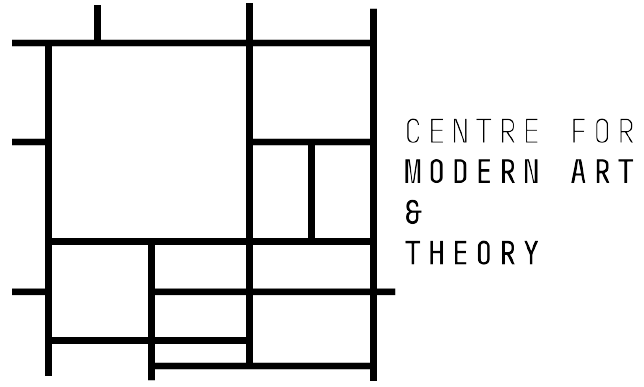

The First Histories of Architecture and the Creation of National Heritage in South-Eastern Europe (1860–1930). A Transnational Approach
Principal Investigator: Cosmin Tudor Minea
Duration: 2023–2026
Provider: GAČR
Abstract:
The project proposes a novel, comparative and transnational analysis of the entangled histories of architecture of the South-Eastern European states (Romania, Serbia, Bulgaria) and neighbouring regions or countries in South-Eastern parts of the Habsburg Empire (Bukovina, Hungary) from the mid-19th century to 1914. The project will investigate the overlapping and competing ideas about the historical monuments and the cultural identity of these regions that are marked by a common history and a shared heritage but also by individual national ideologies developed since the 19th century. The project will thus lead to a different understanding of historical monuments and of the ways modern identities were formed, with a much more careful appreciation for the significance of transnational networks and collaborations and less for individual and often exclusionary national ideologies.

Beyond the Village. Folk Cultures as Agents of Modernity, 1918–1945
Principal Investigator: Marta Filipová
Team: Julia Secklehner
Duration: 2024–2026
Provider: GAČR (Standard Grants)
Abstract:
Folk cultures have never been just a passive observant of history and this project focuses on their agency. It considers them as active participants in and agents of political, economic social and cultural change in Czechoslovakia between 1918 and 1945. Folk cultures are conceived broadly to include ceramics, textiles, garments, toys, or furniture created by anonymous makers. In contrast to now canonical understandings, which have seen folk cultures as passively following high art and as relics of the premodern and preindustrial past, Beyond the Village approaches them as contributors to modernity. Examining the political, commercial and emancipatory roles of folk cultures, the project views them as an organic phenomenon capable of engaging with the challenges of modernity. The project brings innovative views of the topic:
- It interrogates the local cultures of Czechoslovakia, which include not only Czech and Slovak but also Ruthenian, German, Hungarian, or Roma folk cultures.
- It focuses on the transfer of folk cultures between geographies by looking at the roles they had for the diaspora in the USA.
- The project addresses the intensely gendered nature of folk cultures and analyses women’s role as producers, consumers and promoters of folk modernity.
By this, the project aims to provide an alternative reading to established histories of art and design of interwar Czechoslovakia.

Beyond Nation(s) and Empire(s): Cross-Cultural Networks and the Entrepreneurship of Late-Habsburg National Identity
Principal Investigator: Julian Adoff
Duration: 2024–2025
Provider: University of Illinois Chicago (Art History Department); partially funded by Fulbright-Hays Doctoral Dissertation Research Award & UIC Ross Edman Art History Fellowship
Abstract:
The project seeks to define a network of multinational artists in the final decades of the Austro-Hungarian Empire whose interactions challenge the traditional conception of the end goal of nationalism being the creation of the autonomous nation-state. The social and political makeup of the Austro-Hungarian Empire permitted a fungibility of identity, which allowed artists to simultaneously operate within and between multiple seemingly divergent identities. Rather than simply rehashing questions of identity, culture, and the nation along lines that replace ethnicity with something else, this project seeks to get to the root of what it meant to live and work in an empire that fostered international cooperation. My project begins with studying Jewish art and architecture in the region to show how Jews attempted to strike an—at times uneasy—balance between Jewish emancipation, self-orientalization, and their role as Habsburg citizens. From there, I trace how these ideas were translated by non-Jewish artists in the empire, such as the Czech Alfons Mucha and Polish Stanisław Wyspiański. I consider how these artists engaged in a more entrepreneurial conception of building the nation versus the more expected, and often solitary and thought-driven, Romanticist exploration of “nationhood.” As such, this project draws out a network of collaboration and monetary assistance shared amongst many artists who would go on to represent their eventual nation-state’s canons. These collaborative and monetary networks connect the artists, architects, and designers from the first two sections of the dissertation into a singular working group. In the final section, I explore the aftermath of the fall of the Austro-Hungarian Empire to explore how—if at all—artists could maintain their international connections considering the supremacy of the nation-state over multinational polities. Additionally, this section will trace how the artists from the first two parts of the dissertation came to be understood as chiefly nationalist and ensconced into their national canons.

Czechs and the Colonial World: Design and Visual Culture since 1848
Principal Investigator: Matthew Rampley
Duration: 2025–2029
Provider: GAČR (EXPRO)
Abstract:
This project addresses the question: what is the relevance of debates over decolonization to the understanding of Czech design and visual culture since the mid-nineteenth century? From popular images of ‘exotic’ peoples to collecting artifacts and borrowing motifs in architecture and design, Czechs have long engaged with global cultures. Criticisms of colonial attitudes and practices are usually made of large European empires; how pertinent are they to the Czech case? The project considers how Czechs represented non-European cultures, and how that informed their conception of their identity. It analyses the role of political and ideological contexts of Czech society in shaping such representations, and how attitudes and representations developed during the period studied by the project. Outputs will be a monograph, an edited volume, articles and 2 PhDs. As preparation for a follow-on ERC application, the project includes workshops focusing on comparative case studies considering the pertinence of decolonial critiques elsewhere in central and eastern Europe.

Wooden Churches on the Move: Negotiated Modernity between Village and Nation in the Carpathian Mountains, 1918–1939
Principal Investigator: Radu Remus Macovei
Provider: Swiss Federal Institute of Technology ETH – Zürich
Abstract:
Many wooden churches in the Carpathian Mountains region of Eastern Europe were physically relocated in the interwar period after the fall of Austria-Hungary. Through the process of wooden church mobility, architecture became the locus of a negotiated modernity that intersected the competing visions of local communities and national institutions. Starting from three transnational case-studies in interwar Romania, Czechoslovakia and Polish-ruled Ukraine where wooden churches were exchanged for other resources in grassroots and state-led processes of building duplication, rural extraction, urban insertion and building multiplication, the project hypothesizes that Carpathian communities and national institutions negotiated a modernity that challenges dominant imperial, national and ethnocentric historiographies.
The literature has situated the Carpathian wooden churches in (1) world history surveys connecting them to wider cultural influences, (2) national history surveys linking the wooden churches to national and ethnic identity and (3) case-studies related to specific social or material findings. In imperial and national historiographies, Carpathian wooden churches are argued to demonstrate multi-ethnic unity and hierarchy or ethnic exceptionalism. The Carpathian wooden churches’ relocation processes are prime sites for exposing the entanglements between tradition and modernity and are ripe for revisiting outside of ethnocentric approaches, focusing instead on regional and transnational exchange in a material and institutional history of the region. Across the literature, the wooden churches are treated as special subjects of study in the field of vernacular architecture where tradition and modernity are seen in a binary relationship. However, recent scholarship has posited that the two mutually inform each other, proposing multiple modernities that unsettle dominant institutionalized histories. Indeed, in Eastern Europe’s interwar period, national discourses oscillated between valorizing supposedly vanishing ‘folk’ cultural products and modernizing the ‘backward’ countryside, while Carpathian communities were constructing their own modernities in brick and mortar to replace nailless wooden constructions. National institutions responded by legislating preservation, setting up museums and physically relocating community-owned wooden churches from countryside to cities. This latter practice locates architecture at the core of frictions between local communities and national entities.
To reconstruct the modernity negotiated by national institutions and Carpathian communities, this study break down relocation processes into four key moments: building duplication, rural extraction, urban insertion and building multiplication. The project deploys archival research, oral history interviews, and published primary and secondary sources and analyzes the collected material through provenance, ekphrasis, regional and transnational approaches and postcolonial studies. These collection and analytical methods allow inductive reasoning, examining larger theoretical concepts of modernity, tradition, exchange, nation-building and coloniality through microhistories.
Completed Projects

Continuity/Rupture: Art and Architecture in Central Europe 1918–1939
Principal Investigator: Matthew Rampley
Team: Marta Filipová, Matthew Rampley, Nóra Veszprémi
Duration: 2019–2024
Provider: European Comission (Horizon 2020)
Project Web Page: craace.com
Abstract:
When new political elites and social structures emerge out of a historical rupture, how are art and architecture affected? In 1918 the political map of Central Europe was redrawn as a result of the collapse of the Austro-Hungarian Empire, marking a new era for the region. Our project examines the impact of this political discontinuity in three of Austria-Hungary’s successor states: Austria, Hungary and Czechoslovakia. For many centuries, the entire territory of these countries had been ruled by the Habsburgs, and the shared memory of this imperial past created a common cultural space, even as the newly formed nation states were asserting themselves in opposition to that memory.

Muni Award in Science and Humanities
Principal Investigator: Matthew Rampley
Team: Christian Drobe
Duration: 2019–2024
Provider: GAMU (Grant Agency of Masaryk University)
Project Web Page: muni.cz/vyzkum/projekty/47648
Abstract:
Resources given by the MASH Award will be used be to expand the thematic scope of the ERC/CRAACE project as well as to increase the range of scientific outputs. In addition, the MASH funding will also be used to support the development of early career researchers in the broad areas covered by the project, namely, early- to mid-twentieth century art, architecture and design in central Europe, in order to build up the research capacity of the Department of Art History and the Faculty, more generally.

Remote Access: Understanding Art from the Distant Past
Principal Investigator: Jakub Bulvas Stejskal
Team: Ancuta Maria Mortu, Mark Richard Windsor
Duration: 2021–2024
Provider: GAMU (Grant Agency of Masaryk University)
Project Web Page: muni.cz/vyzkum/projekty/61888
Abstract:
Remote Access examines possible theoretical concepts that would address such anxiety, through the construction of an aesthetics of remote objects. The project’s guiding hypothesis is that the problem of the appropriate aesthetic response to remote objects can be reframed as one of recovering their public aesthetic status.

Creativity from Vienna to the World: Transatlantic Exchanges in Pedagogy and Design
Principal Investigator: Julia Secklehner
Team: Megan Brandow-Faller
Duration: 2022–2023
Provider: The Botstiber Institute for Austrian-American Studies
Project Web Page: viennatotheworld.com
Abstract:
Creativity from Vienna to the World is an online project that includes lectures, a blog and an online exhibition. It connects aspects of design and women’s history, pedagogy, migration history and cultural transfer to trace the achievements of migrant women designers who moved to the United States from Central Europe in the first half of the twentieth century. More specifically, the project addresses how ideas related to design and pedagogy consolidated in Central Europe were developed by women designers who had successful second careers in the United States, such as Emmy Zweybrück-Prohaska, Hilda Jesser-Schmid, Vally Wieselthier and Lisl Weil.


